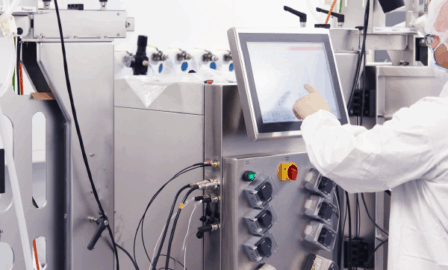2023 Pharmaceutical Manufacturing Trends
Clarkston’s team of pharma consultants have highlighted the top pharmaceutical manufacturing trends that businesses should consider. Read all five trends for 2023 by downloading the full report here.
The pharmaceutical manufacturing industry has entered a period of rapid innovation and modernization. Life sciences companies are expected to produce and deliver pharmaceuticals at faster rates than ever before. The Covid-19 pandemic and the adoption of Industry 4.0 have brought a multitude of changes to the industry. Furthermore, regulatory inspections are ramping up again and it’s essential that companies maintain Current Good Manufacturing Practices (cGMP).
Moving into 2023 and beyond, life sciences companies must continue to find innovative ways to overcome the unique challenges that they face in order to maintain a competitive advantage in the pharmaceutical manufacturing industry.
2023 Pharmaceutical Manufacturing Trends
Trend #1: Labor Shortages
As new technologies emerge and demand increases, it’s essential to grow the talent pipeline. The pharmaceutical industry is entering gene and cell therapy. Process development and manufacturing cell and gene therapies require new technologies and processes and, therefore, highly skilled and specialized knowledge. Because of this, it’s critical to retain and attract specially skilled talent. However, given the emerging nature of the market, the labor pool is limited and highly competitive, leaving jobs unfilled. Some companies are competing with titles and salaries, but ultimately, finding the right knowledge and cultural fit specific to an organization is challenging regardless of the attraction tactics.
Cell and gene therapy companies are not alone in facing labor shortages. Across the board, pharmaceutical companies have struggled to get the right talent in the right place at the right time. Taking advantage of some layoffs in the tech sector and with Big Pharma in late 2022 and early 2023 may provide some much-needed relief.
Download the Full 2023 Pharmaceutical Manufacturing Trends Report Here
In addition, digitization and automation will play a role in addressing the labor shortage. Digitization is transforming manufacturing and can be leveraged to streamline processes and onboard employees. Moving paper-based processes into systems is a simple first step. More advanced applications include using systems for training by simulating real production processes and creating comprehensive knowledge management systems.
While there’s no easy solution to the labor shortage, companies can take steps to help close the gap. Onboarding training and upskilling needs will be different from traditional methods. Companies may need to bring in employees with applicable skills and provide focused, technology-specific training after they are hired to stay competitive and meet growing demand. It’s essential to forecast and understand the changing workforce needs and imperative that employees develop robust skill sets.
Trend #2: Supply Chain Challenges
The Covid-19 pandemic caused a major disruption in the supply chain, and the pharmaceutical industry is no exception. As we move into coexisting with the virus, we may also have to coexist with this challenging supply chain. The industry is now reassessing their manufacturing networks and strategies. The weaknesses in the global supply chain have become evident and shown the importance of diversifying the supplier base and manufacturing base. Supply chain resilience is necessary and more important than ever.
The U.S. is largely dependent on foreign manufacturers, which has led to some key drug shortages over the past few years, as most Active Pharmaceutical Ingredients (APIs) come from China and India. There has been an increasing push to bring API manufacturing and contract manufacturing back to the United States in order to strengthen the domestic supply chain. Additionally, building a national stockpile has become a more pressing concern. These can be difficult challenges to take on while fighting to keep up in the current environment.
The need for better supply chain visibility has also become clear, which is particularly important for cold chain supply. Real-time visibility solutions will help manufacturers better predict the supply chain and react to disruptions. Implementing these solutions will allow businesses to optimize and adapt processes in real-time. New technologies will play a role in addressing supply chain problems and help to build a resilient and robust supply chain. Continue reading by downloading the full report below.
Download the Full 2023 Pharmaceutical Manufacturing Trends Report Here
Subscribe to Clarkston's Insights
Contributions from Lydia Underwood



